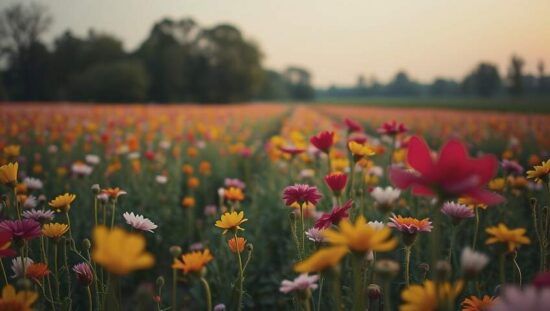Germany’s ornamental plant sector is facing a concerning decline, according to newly released data from the Federal Statistical Office (Destatis). The number of horticultural businesses cultivating flowers and ornamental plants has shrunk considerably, raising questions about the sector’s long-term viability and the government’s response to the challenges.
In 2025, just 2,821 businesses operated across 5,760 hectares, marking a 9.7% reduction in the number of operations and an 8.1% decrease in cultivated area compared to the 2021 survey. This trend is even more pronounced when comparing data to 2017, with a 23.1% decrease in ornamental plant producers and a 12.6% drop in cultivated area. The contraction highlights a structural shift within the agricultural landscape, potentially fueled by rising input costs, labor shortages and evolving consumer preferences.
North Rhine-Westphalia remains the dominant region for ornamental plant production, accounting for almost half of the cultivated area (47.4% or 2,730 hectares). However, the widespread decline across all regions points toward systemic issues demanding broader attention.
A significant portion of production (24.6% or 1,420 hectares) takes place under greenhouses and protective structures, with over half of these areas experiencing heating, crucial for extending growing seasons. This reliance on energy-intensive practices is particularly vulnerable in the face of rising energy prices, potentially compounding the sector’s financial pressures.
The production of ready-to-sell plants, including bedding and balcony plants, demonstrates a mixed performance. While production of Viola, including pansies (136 million units) and Calluna (heather, 136 million units) shows growth, overall numbers are lower than in previous periods. The 1,939 businesses involved represent an 11.8% decrease from 2021, illustrating the ongoing contraction in this crucial segment.
Indoor plant production is also experiencing a sharp decline, with 1,016 businesses (down 16% from 2021) producing 86 million ready-to-sell plants – a significant drop compared to both 2020/2021 and 2016/2017. Production of Christmas stars, a traditional German market staple, continues to decline, although still representing a major portion, hinting at shifting consumer demand.
Furthermore, the decline in cut flower production is especially stark. 1,282 businesses cultivated cut flowers across 2,420 hectares – a 14% decrease from 2020/2021 and a 22.1% reduction since 2016/2017, raising concerns about the long-term viability of this sector and its contribution to the national flower industry. The predominance of outdoor cultivation makes cut flower production particularly susceptible to weather patterns and climate change.
The data reveals a concerning trend of shrinking horticultural businesses across multiple sub-sectors. Despite the resilience shown in certain product categories, the overall decline warrants a thorough examination of the underlying factors. Questions remain about the adequacy of government support, the implementation of sustainable practices within the sector and the need for innovative strategies to address the evolving challenges facing Germany’s ornamental plant industry. Further investigation is needed to determine whether current policies account for these market shifts and what interventions may be required to safeguard this important segment of the German economy.





